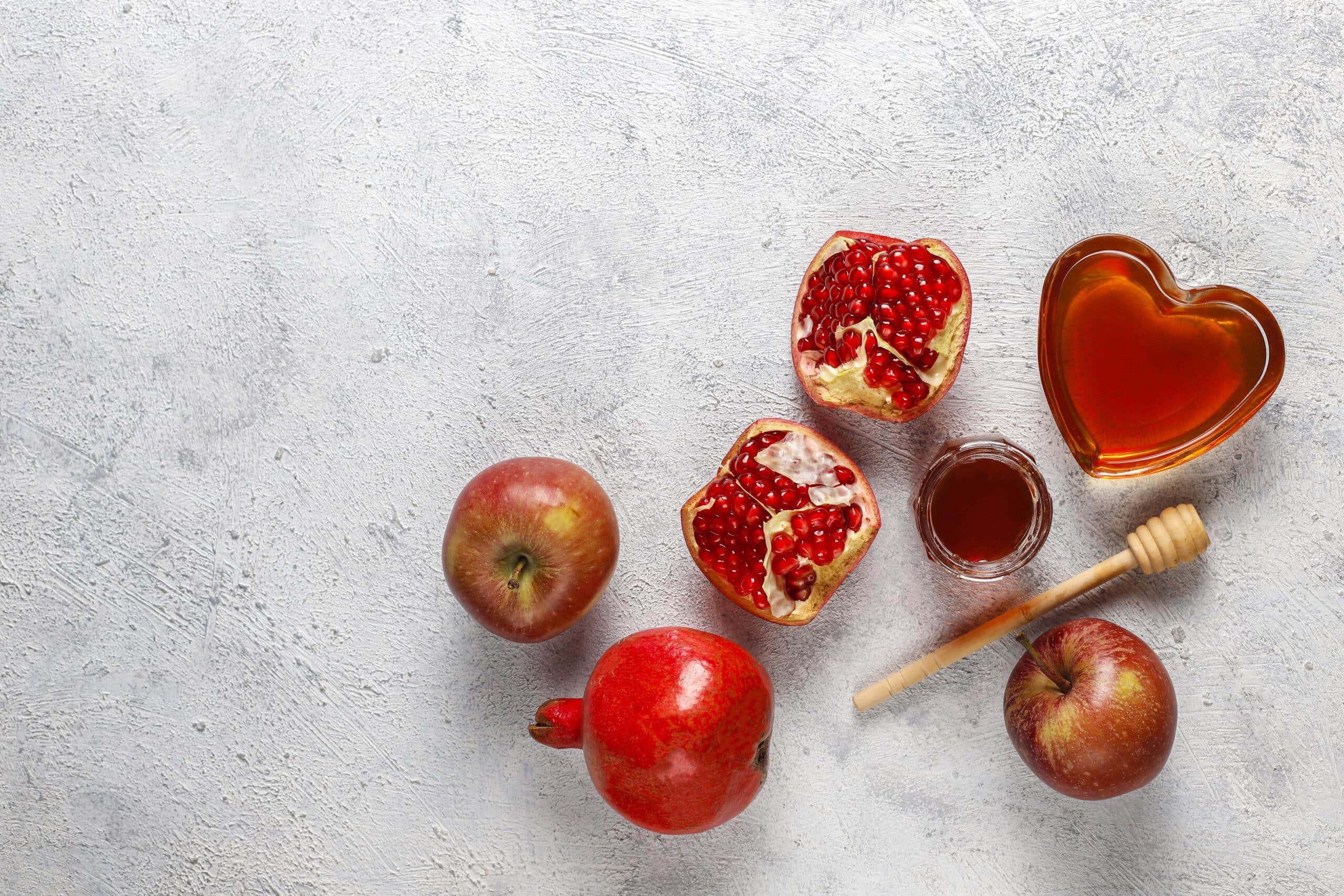
Celebrating September’s Jewish High Holidays


For those who practice Judaism, this September is an especially important month, filled with significant, “High Holidays” or, “High Holy Days” that the community recognizes in various ways. These include:
- Rosh Hashanah: Begins at sundown on 9/6 and ends at sundown on 9/8
- Yom Kippur: Begins at sundown on 9/15 and ends at sundown on 9/16
- Sukkot: Begins at sundown on 9/20 and ends at sundown on 9/27
There are many denominations and subgroups within the Jewish community. Each one recognizes the above holidays through different, unique, and meaningful traditions. For example, some might recognize a holiday for a single night, while some may observe it for two.
Holidays at a Glance:
Rosh Hashanah, “literally the “head of the year” is the Jewish New Year. It is a time of inner renewal and divine atonement. This year, Rosh Hashanah begins at sundown on Monday, September 6th. For those observing two days, it ends at sundown on Wednesday, September 8th” Source: https://www.myjewishlearning.com/article/rosh-hashanah-2021/
In Judaism, “Rosh Hashanah commemorates the creation of the world and marks the beginning of the Days of Awe, a 10-day period of introspection and repentance that culminates in the Yom Kippur holiday, also known as the Day of Atonement. Rosh Hashanah and Yom Kippur are the two “High Holy Days” in the Jewish religion.” Source: https://www.history.com/topics/holidays/rosh-hashanah-history
“Traditional greetings on Rosh Hashanah include, “L’Shana Tovah tikatevu,” which means, May you be inscribed for a good year, or just “Shana Tovah,” which means “a good year.” Some say “Happy New Year!” or “a happy and healthy New Year.” Source: https://18doors.org/_jewish_greetings_cheat_sheet/
“Yom Kippur, which comes ten days after Rosh Hashanah, is the Day of Atonement. Together, they are sometimes referred to as the Jewish High Holidays. They mark a period known both as the “Days of Awe” and the “Ten Days of Repentance,” during which Jewish people are supposed to reflect on the sins they have committed during the past year. Rosh Hashanah combines the joy of a New Year celebration and its theme of renewal with the seriousness associated with confronting one’s failings and seeking forgiveness both from God and from those one has wronged. Yom Kippur is considered the holiest day of the Jewish sacred calendar.”
“Yom Kippur is a day of fasting and prayer. The fast begins at sunset and ends the following sunset. Young children and others for whom fasting presents a medical risk are exempt from fasting. The synagogue worship focuses on rituals of penitence and confession. Many Jews will spend the entire day in synagogue. Jewish tradition teaches that one cannot ask for forgiveness from God for sins against another person unless one has first made amends with that person. Thus, many Jews at this time of year seek forgiveness from friends and families in advance of the holy day. Festive meals in the home, especially one to break the fast at the end of Yom Kippur, are also traditional. Jewish law prohibits working or going to school on these holidays.”
Sukkot, “is one of the most joyful festivals on the Jewish calendar. “Sukkot,” a Hebrew word meaning “booths” or “huts,” refers to the Jewish festival of giving thanks for the fall harvest.” Source: https://reformjudaism.org/jewish-holidays/sukkot
“Sukkot always starts five days after Yom Kippur. Sukkot is known as the Harvest Festival, kind of like Jewish Thanksgiving. It lasts for seven days. The holiday is named after the temporary huts that the Israelites lived in while they wandered through the desert for 40 years. Many people celebrate Sukkot by building their own huts, called sukkahs, and hanging out and eating their meals in them. Some families even sleep in their sukkah, which can be like a big family sleepover. Two traditions of Sukkot are waving the lulov and etrog, which has to do with joy, fertility and rain, and decorating the sukkah with fruit and paper chains.” Source: Other Holidays | JewBelong